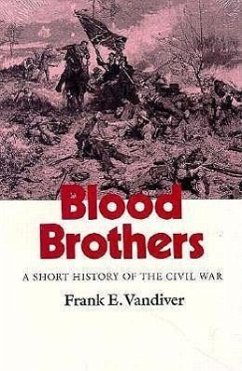Brothers by blood before the war; brothers in blood after. The blood mingled in the Civil War became the symbol and perverse source of indissoluble union between two sections, two ways of life, two visions of the future, and even two revolutions. In riveting detail yet with broad sweep, veteran Civil war historian Frank E. Vandiver recounts the campaigns and major battles of the first war of the Industrial Revolution, with its machinery, firepower, and engineering beyond imagination. With provocative insight, he traces a picture of the war as rooted in the character and vision of its two leaders and their two sectional revolutions. In the North, Abraham Lincoln built a massive war effort by expanding executive authority, sometimes in ways beyond the Constitution. Not only emancipation, but also new monetary policies, new forms of commercial organization and production, and new ways of raising and commanding armies made a different United States, shaped for world power. In the service of the Confederacy, Jefferson Davis, a states' righter, became a Confederate nationalist. Keeping up the fight forced him and many Southerners to accept both a centralization and an industrialization they hated. When the dream was lost and the country gone, vestiges of this revolution would make the Southern system compatible with the new economic, social, and political system that had emerged in the North. The South might look back fondly, but it was readier than it knew for what would come: a new union, one and finally indivisible.
Bitte wählen Sie Ihr Anliegen aus.
Rechnungen
Retourenschein anfordern
Bestellstatus
Storno








